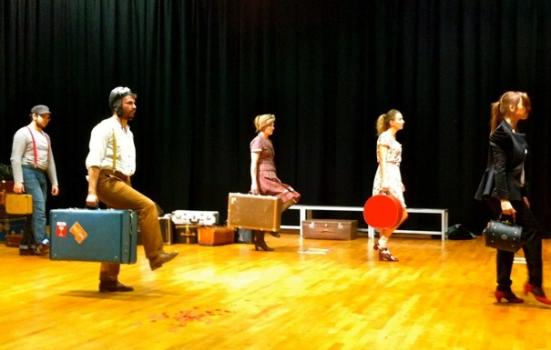Applying for Creative Europe funding for a Cooperation Project requires real commitment and many hours devoted to completing the application form, warns Lorraine von Gehlen.

Now we know: Creative Europe is for real, as is the expanding and culturally rich European Union itself. The first round of successful funding bids to this programme has been announced, and none more exciting than the Cultural Cooperation projects.
If you are wondering whether you could get a slice of that cake for your arts organisation, you might start by asking yourself whether collaboration and exchange with organisations around Europe is where you want to go next, for all the right reasons. What reasons might they be?
Cultural learning springs to mind first, because we Brits often seem to forget that, for all our pride in British culture and heritage, we don’t know that much about the hugely varied cultural life of the rest of Europe. An intercultural arts project can bring huge benefits not only to its participants and audiences but also to arts professionals.
If you have the project management experience, a transnational vision and a collaborative approach, you and your partners can succeed together
Then I suggest there must be genuine motivation to achieve something that is only possible by working with partners in other countries. Perhaps you will undertake research into what is going on in parts of Europe that you may not even have heard of before, which could inspire you to start a dialogue and get excited about what you could do together.
Maybe along the way you will identify needs, such as mentoring, infrastructure improvements or audience development support, and these can form part of your proposal.
Some organisations may be keen to strengthen the creative sector’s infrastructure, in a more strategic way, rather than focus on transnational arts activities, which also fits in with the programme’s aims.
Also, if you would like to see artists or artworks being shared more across national boundaries, then you are barking up the right tree.
Are there wrong reasons? Chasing another pot of money to boost your organisation’s income is the wrong place to start, I would say, however desperate the funding situation may seem. And if you mainly fancy the idea of foreign travel, a holiday would be more suitable.
Right! Discussions with colleagues and partners are underway, and you have read the guidelines. But still you wonder what they are really looking for. The proposal needs to be well developed, so don’t rush it, and if you have not progressed a long way yet, the deadline for this year of 1 October is probably too close. Partners should be involved in preparing the proposal, not just tagged on, and it can be beneficial to name individuals and highlight their relevant experience. The role of the applicant organisation and of each partner needs to be clear, with all responsibilities covered. Not forgetting that some delivery activities may be suitable for contracting out to companies who are not presented as partners.
When you are ticking boxes under Relevance, ranking your priorities, and adding your explanation, it is worth looking back at the programme’s objectives and priorities, to remind yourself of what Creative Europe wants to achieve. Presenting your answers clearly and convincingly under the four award criteria is crucial, and it may be worth you or a critical friend reviewing them as the funder will, not just to score high but to help you design an excellent project.
It is a relief to know that you do not have to provide evidence that the match funding has been secured at this stage, and great also that some existing funds and activities can be included, as long as they form an integral part of the project. Don’t feel that only full-time bid-writers can succeed – if you have the project management experience, a transnational vision and a collaborative approach, you and your partners can succeed together.
If you are at the early stages, you have time to develop the project concept with potential partners, with the 2015 or 2016 deadline in mind. In addition to your contacts and web searches, the Creative Europe Desk UK provides useful partner search information. If you are putting the finishing touches together for the 2014 deadline, you may like to check that you have plenty of details in the Work programme, even if they cannot be carved in stone yet.
Creative Europe presents a great opportunity for genuine intercultural collaboration and transnational mobility, so if that is part of your mission, good luck with your partner search and project inspiration.
Successful applications in 2014
Larger scale UK-led applications:
Pilot Theatre Ltd - Platform Shift+
International Youth Foundation/European Union Youth Orchestra – Towards 2020: Skilling musicians and engaging audiences
Plus 19 other successful larger-scale projects have UK partners.
Smaller scale UK-led applications:
Hampshire and Wight Trust for Maritime Archaeology – Common Cultural Connections
The British Council – Take Over
Curated Place Ltd − Moving Classics Network for New Music
The Tate Gallery – Writing Exhibitions/Exhibiting Literature: an Imaginary European Museum
Plus 11 other successful smaller-scale projects have UK partners.
Lorraine von Gehlen is a creative producer and an ‘expert' for the Creative Europe funding programme, assessing Co-operation Project applications.
ec.europa.eu/creative-europe




